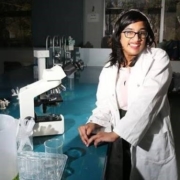With some goals, the end is just the beginning. . . .
For 27 years, I wanted to be a parent. As a teenager, after working as a Beaver Scout leader and working a summer job with small children as a teacher’s aide, I knew that raising a child was an experience I wanted, no – I NEEDED, to have.
Along the road, I have had a lot of successes – achieving the highest honour as a Canadian Boy Scout – the Chief Scout Award, being awarded a Governor General’s Medal, a Courage to Come Back Award, and a Terry Fox Humanitarian Award, winning a gold medal/setting a world record at the ’88 Seoul Paralympics, and as a lawyer with a busy estate practice – many community service awards. As I have cerebral palsy, these accolades show a drive to achieve. However, these accomplishments pale when compared to the “big one” – being a parent. . . the process of creating, and then helping to shape a living, loving, contributing member of society.
The problem with parenting (especially as a male), is that unlike other goals, it’s not just a unilateral feat. You need a willing, engaged partner – at least for the initial process. To further complicate things, I had been raised in an environment where everyone had two parents, so the idea of being a single parent – if such was even possible – hadn’t even occurred to me.
As a result, for the 27-year quest, I worked on finding what I THOUGHT was the necessary ingredient – a spouse. Over the years, I dated many lovely, smart, delightful women. Unfortunately, none were the “one”. Finally, at 40, I concluded that the dream of being a parent wasn’t going to be fulfilled.
A son to love
Apparently God had other plans. . . At 42, I became the father to the most wonderful little being I had ever met – Elliot. Our adventure together began about 5 hours after his birth. As I cuddled Elliot, my first words to him were, “Hi! I’m your Daddy, and I’ve been waiting for you for a very, very long time”. Elliot opened his eyes, reached up, wrapped his tiny hand around my thumb, and squeezed it harder than I thought was possible.
While Elliot’s mom had no interest in sharing her life with me, 10 days after his arrival, I started caring for Elliot a couple of days a week. With the help of my mother, I learned to pick up Elliot, change him, bathe him, and feed and nurture him. By age 5, I began caring for him half-time. As our adventure evolved, I realized that as a parent, the child’s arrival is just the beginning. My role is to create a model, to set a positive example and to help my child to become an active, contributing member of society. I try to accomplish this is by showing Elliot that he has one person in the world who is absolutely blindly nutty about him, and no matter what he does, he has no doubt that I still love him with every molecule of my body.
Compassion and contribution
At the same time, my cerebral palsy has had an interesting effect on Elliot’s psyche. Elliot has evolved into an empathetic, kind, considerate little person – illustrated, in part, by the first aid kit he carries in his backpack, and uses to patch-up the “casualties” he passes on the school ground.
From such an early age, Elliot’s desire to ‘contribute’ has been intriguing. . . At eight months, one day as I was changing his diaper, I noticed that he was helping by picking up his little butt to make it easier to slide the diaper under him! Similarly, in response to my challenge in picking him up, at 12 months, he suddenly started lifting his arms each time I went to pick him up – making it easy to slip my arms around him.
At 20 months, I realized he was picking up on my concern for others. We were hanging out one afternoon when I got a call that a client only had a few hours to live – and she needed her will signed NOW. Not having time to find childcare, I bundled Elliot into my car, and raced to my client’s house. When we walked in her front door, Elliot’s usual giggling subsided, and he became very quiet – not frightened or sad – just quiet. When we entered my client’s room, on his own initiative, Elliot marched over to her bed. After stroking her blanket for a minute, he began stroking her arm, and then gave her a grin. Despite her pain, she smiled back, after which Elliot reverted to a typical little boy and traipsed off to inspect the flashing lights of her life support machinery. I’m told that after Elliot’s visit, my client lived three days longer than expected. . .
At age 6, Elliot started insisting that HE be the one who helps me in restaurants. At a breakfast buffet on a trip during Spring Break, I made the grave mistake of asking a server to help me carry glasses of juice to our table. Elliot turned, and with hands on his hips and the sternest look ever, exclaimed: “Daddy, if you need help, you ask ME! Do you understand?”
While parenting – and loving – my child feels good, it also provides a way to affect the community. We need a world that has people in it who have compassion for others. I can’t change the world myself, or even make a small dent, but I believe that by my giving Elliot a loving and caring upbringing, he’ll grow to be loving and supportive of others. This will, in turn, make the community a better place for all. There’s always a chance that Elliot will grow up to be an axe-murderer. But more likely, as I think of the tiny 8-month-old pulling his butt off the ground to assist in diaper changing, I believe this is a being who, as a result of having a parent with cerebral palsy, already understands compassion for others. With the right role model, a child becomes a contributor surprisingly early on in life – a long time before you would believe it possible.
Isn’t this the ultimate dream for a parent?
ABOUT HALLDOR BJARNASON
Halldor is a Barrister and Solicitor at Access Law Group in Vancouver, Canada. He is a former director of Neil Squire Foundation and former National President of Canadian Cerebral Palsy Sports Association. Halldor is also a former executive director and current member at the Cerebral Palsy Association of British Columbia.
In 1988, Halldor was a gold medalist and broke the world record in the cycling event at the Seoul Summer Paralympic Games.
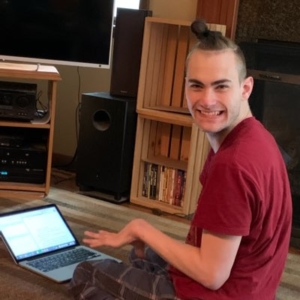 “I was introduced to a head pointer by my occupational therapist at around 10 years old, but the metal gave me a headache after a while. Then I used my nose one day and realised I was more in control and more efficient. From then on I used my nose,” shared Kevin.
“I was introduced to a head pointer by my occupational therapist at around 10 years old, but the metal gave me a headache after a while. Then I used my nose one day and realised I was more in control and more efficient. From then on I used my nose,” shared Kevin.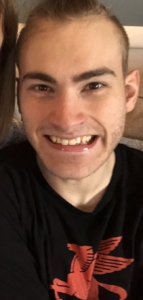 “Don’t be afraid to try things, sometimes it may just need to be modified and other times it just cannot happen and it’s okay to accept that. God has a purpose for all of us. There is no perfect and there is no normal. We are all special,” Kevin finished.
“Don’t be afraid to try things, sometimes it may just need to be modified and other times it just cannot happen and it’s okay to accept that. God has a purpose for all of us. There is no perfect and there is no normal. We are all special,” Kevin finished.
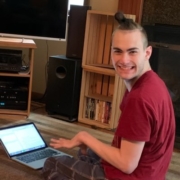
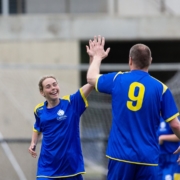
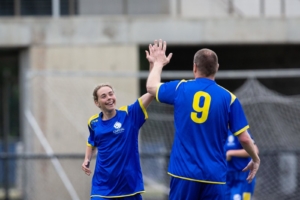 Matilda, who works in IT for the National Disability Insurance Agency, is part of the
Matilda, who works in IT for the National Disability Insurance Agency, is part of the 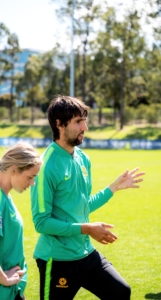 Matilda knows the value of mentoring, and has been mentoring for many years now.
Matilda knows the value of mentoring, and has been mentoring for many years now.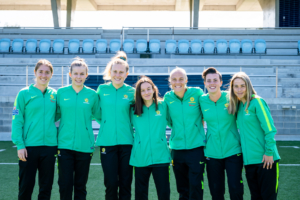 As a mentor, Matilda’s goal is to show others that people with disabilities are capable of achieving anything they put their mind to, and that when the going gets tough, she’ll be there to catch her mentees and pick them up.
As a mentor, Matilda’s goal is to show others that people with disabilities are capable of achieving anything they put their mind to, and that when the going gets tough, she’ll be there to catch her mentees and pick them up.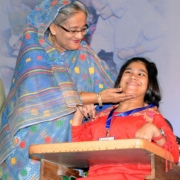
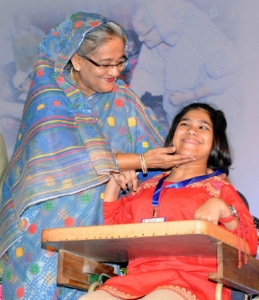
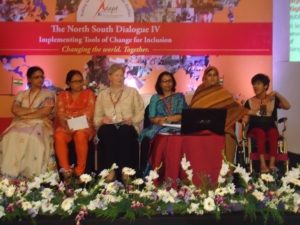 After a couple of years of regular schooling when she became eligible to sit for O and A Level exams, she faced tremendous problems. For example, British Council provided her a scribe of different background and as a consequence she had to face difficulties in communication during her exam. So, her knowledge did not reflect in her results, though she had been working very hard. She expresses her frustration – “I attended the school regularly but I can’t write and stand. Many times at school people can’t understand me. I have a woman who writes for me but often she doesn’t understand and I have to spell out the words.
After a couple of years of regular schooling when she became eligible to sit for O and A Level exams, she faced tremendous problems. For example, British Council provided her a scribe of different background and as a consequence she had to face difficulties in communication during her exam. So, her knowledge did not reflect in her results, though she had been working very hard. She expresses her frustration – “I attended the school regularly but I can’t write and stand. Many times at school people can’t understand me. I have a woman who writes for me but often she doesn’t understand and I have to spell out the words.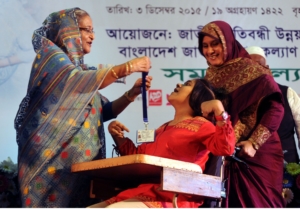 In 2012 at the age of 14 she attended an international conference on disability in Goa, India. 200 delegates from different parts of the world joined the conference and she was the youngest participant. Comments made by the organizers on her speech reads – “The person who stole the show on the third day is also the youngest delegate in the conference – 14 year old Anila from Bangladesh. Holding the audience in rapt attention for 10 minutes, this spunky girl who has cerebral palsy said in slow but intelligible English, ‘It is painful when I go to the market and people stare. I am not included in schools. I have seen my mother cry so many times due to this.’ The young age has not come into the way of her asserting her fundamental rights as she has been instrumental in bringing disability into the purview of the globally reputed organization ‘Save The Children’.
In 2012 at the age of 14 she attended an international conference on disability in Goa, India. 200 delegates from different parts of the world joined the conference and she was the youngest participant. Comments made by the organizers on her speech reads – “The person who stole the show on the third day is also the youngest delegate in the conference – 14 year old Anila from Bangladesh. Holding the audience in rapt attention for 10 minutes, this spunky girl who has cerebral palsy said in slow but intelligible English, ‘It is painful when I go to the market and people stare. I am not included in schools. I have seen my mother cry so many times due to this.’ The young age has not come into the way of her asserting her fundamental rights as she has been instrumental in bringing disability into the purview of the globally reputed organization ‘Save The Children’.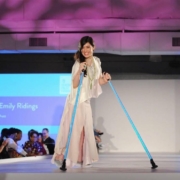
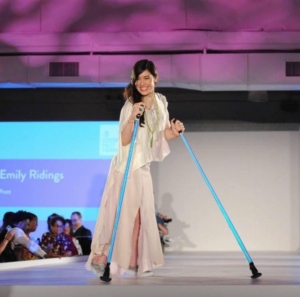 Xian’s cerebral palsy manifests in muscle tension, muscle weakness, poor balance and coordination and dragging her left foot. She walks with adapted two ski poles for balance, which she says she occasionally dresses up to compliment an outfit, for example, black Satin for prom.
Xian’s cerebral palsy manifests in muscle tension, muscle weakness, poor balance and coordination and dragging her left foot. She walks with adapted two ski poles for balance, which she says she occasionally dresses up to compliment an outfit, for example, black Satin for prom.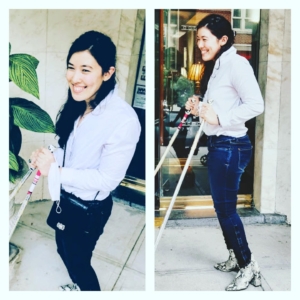 Xian says that her whole life she’s paid attention to brands that had sturdier soles, like the Merrell branded shoes she wore in different colours for five years straight.
Xian says that her whole life she’s paid attention to brands that had sturdier soles, like the Merrell branded shoes she wore in different colours for five years straight.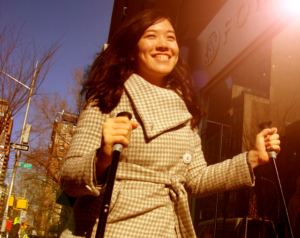 According to Xian, best practice in fashion design is facilitating ease of wear, considering as many unique bodies as possible, and making designs both accessible and beautiful.
According to Xian, best practice in fashion design is facilitating ease of wear, considering as many unique bodies as possible, and making designs both accessible and beautiful.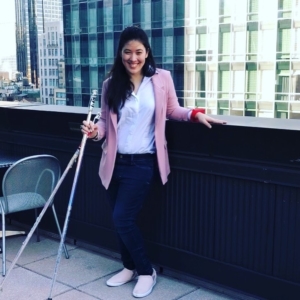 “Typically, I like clothes that are flowy and a bit bohemian. So most days, I would have said [my favourite clothes are] maxi dresses, jumpsuits (purely aesthetic in this case, for my long body type, but still often inaccessible so I need help getting out of them) or tunics, but since walking in NY fashion week in Sept, my new favourite outfit is the professional wear Zappos sent me. This includes the amazing
“Typically, I like clothes that are flowy and a bit bohemian. So most days, I would have said [my favourite clothes are] maxi dresses, jumpsuits (purely aesthetic in this case, for my long body type, but still often inaccessible so I need help getting out of them) or tunics, but since walking in NY fashion week in Sept, my new favourite outfit is the professional wear Zappos sent me. This includes the amazing 